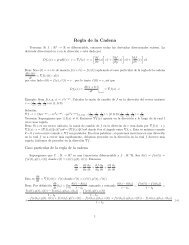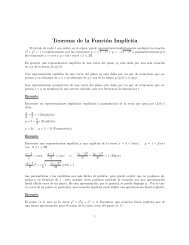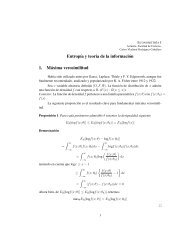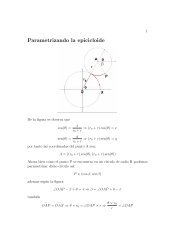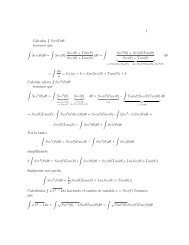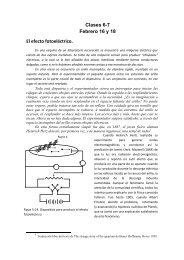"Surely You're Joking, Mr. Feynman!" - unam.
"Surely You're Joking, Mr. Feynman!" - unam.
"Surely You're Joking, Mr. Feynman!" - unam.
Create successful ePaper yourself
Turn your PDF publications into a flip-book with our unique Google optimized e-Paper software.
was "six books," you'd have to write "6," and put a big circle around it. If what was in the<br />
circle was right, you won; if it wasn't, you lost.<br />
One thing was for sure: It was practically impossible to do the problem in any<br />
conventional, straightforward way, like putting "A is the number of red books, B is the<br />
number of blue books," grind, grind, grind, until you get "six books." That would take<br />
you fifty seconds, because the people who set up the timings on these problems had made<br />
them all a trifle short. So you had to think, "Is there a way to see it?" Sometimes you<br />
could see it in a flash, and sometimes you'd have to invent another way to do it and then<br />
do the algebra as fast as you could. It was wonderful practice, and I got better and better,<br />
and I eventually got to be the head of the team. So I learned to do algebra very quickly,<br />
and it came in handy in college. When we had a problem in calculus, I was very quick to<br />
see where it was going and to do the algebra fast.<br />
Another thing I did in high school was to invent problems and theorems. I mean,<br />
if I were doing any mathematical thing at all, I would find some practical example for<br />
which it would be useful. I invented a set of righttriangle problems. But instead of giving<br />
the lengths of two of the sides to find the third, I gave the difference of the two sides. A<br />
typical example was: There's a flagpole, and there's a rope that comes down from the top.<br />
When you hold the rope straight down, it's three feet longer than the pole, and when you<br />
pull the rope out tight, it's five feet from the base of the pole. How high is the pole?<br />
I developed some equations for solving problems like that, and as a result I<br />
noticed some connection perhaps it was sin 2 + cos 2 = 1 that reminded me of<br />
trigonometry. Now, a few years earlier, perhaps when I was eleven or twelve, I had read a<br />
book on trigonometry that I had checked out from the library, but the book was by now<br />
long gone. I remembered only that trigonometry had something to do with relations<br />
between sines and cosines. So I began to work out all the relations by drawing triangles,<br />
and each one I proved, by myself. I also calculated the sine, cosine, and tangent of every<br />
five degrees, starting with the sine of five degrees as given, by addition and halfangle<br />
formulas that I had worked out.<br />
A few years later, when we studied trigonometry in school, I still had my notes<br />
and I saw that my demonstrations were often different from those in the book.<br />
Sometimes, for a thing where I didn't notice a simple way to do it, I went all over the<br />
place till I got it. Other times, my way was most clever the standard demonstration in<br />
the book was much more complicated! So sometimes I had 'em beat, and sometimes it<br />
was the other way around.<br />
While I was doing all this trigonometry, I didn't like the symbols for sine, cosine,<br />
tangent, and so on. To me, "sin f" looked like s times i times n times f! So I invented<br />
another symbol, like a square root sign, that was a sigma with a long arm sticking out of<br />
it, and I put the f underneath. For the tangent it was a tau with the top of the tau extended,<br />
and for the cosine I made a kind of gamma, but it looked a little bit like the square root<br />
sign.<br />
Now the inverse sine was the same sigma, but lefttoright reflected so that it<br />
started with the horizontal line with the value underneath, and then the sigma. That was<br />
the inverse sine, NOT sin 1 f that was crazy! They had that in books! To me, sin 1<br />
meant 1/sine, the reciprocal. So my symbols were better.<br />
I didn't like f(x) that looked to me like f times x. I also didn't like dy/dx you<br />
have a tendency to cancel the d's so I made a different sign, something like an & sign.




